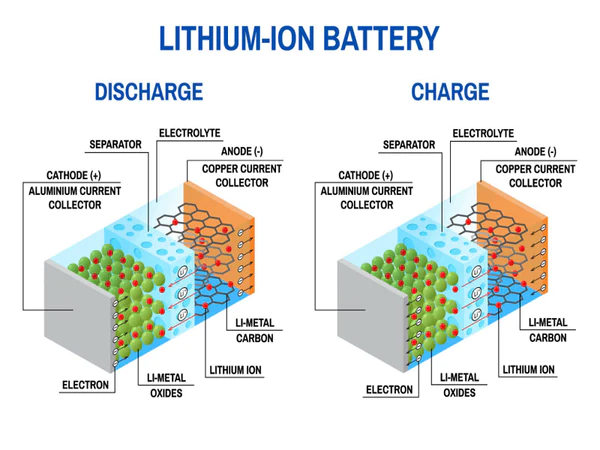The economics of lithium-ion (Li-ion) batteries have undergone significant transformation over the past decade, driven by advancements in technology, increased production scales, and the growing demand from the electric vehicle (EV) and renewable energy sectors. These factors have contributed to a dramatic decrease in costs, making Li-ion batteries a pivotal element in the global transition towards clean energy. This article delves into the current cost trends of lithium-ion batteries, explores the factors influencing these trends, and discusses market predictions that could shape the future of energy storage.

Historical Cost Trends
Historically, the cost of Li-ion batteries has been a major barrier to their widespread adoption. However, since 2010, the cost of lithium-ion battery packs has fallen significantly, by approximately 90% or more. This decline is largely attributed to economies of scale, improvements in battery chemistry and efficiency, and optimized manufacturing processes.
Factors Influencing Cost Reductions
- Economies of Scale: The expansion of battery production facilities, known as gigafactories, has significantly lowered the per-unit cost of batteries. Large-scale production optimizes the use of materials and resources, reducing waste and inefficiencies.
- Technological Advances: Innovations in electrode materials, electrolytes, and battery design have improved the energy density of Li-ion batteries, allowing for longer lifespans and greater storage capacities. These advancements reduce the cost per kilowatt-hour (kWh) of storage, making batteries more economically viable.
- Supply Chain Optimization: As the battery industry matures, supply chains for critical raw materials such as lithium, cobalt, and nickel are becoming more efficient. Strategic partnerships and investments in mining and refining capacities are stabilizing supply and potentially lowering costs, although price volatility remains a concern.
- Recycling and Repurposing: Initiatives to recycle Li-ion batteries and repurpose them for second-life applications are emerging. These efforts can reduce the demand for raw materials and contribute to cost reductions.
Current Cost Trends
As of my last update, the average cost of lithium-ion battery packs has approached or fallen below $100 per kWh for some manufacturers, a price point often cited as the threshold for achieving cost parity with internal combustion engine vehicles in the automotive sector. For stationary storage applications, the cost dynamics may vary, with system integration and operational factors also influencing overall economics.
Market Predictions
- Continued Cost Decline: Market analysts predict that the cost of Li-ion batteries will continue to decline, albeit at a potentially slower rate than in the past decade. Innovations in battery technology and manufacturing processes will likely drive these cost reductions.
- Diversification of Chemistry: To mitigate the risks associated with raw material supply and costs, the industry is exploring alternative chemistries, such as lithium iron phosphate (LFP), which are less reliant on cobalt and nickel. These alternatives may offer cost advantages and supply chain resilience.
- Increased Demand from EVs and Energy Storage: The demand for Li-ion batteries is expected to surge, fueled by the growth in electric vehicles and the increasing adoption of renewable energy storage solutions. This demand will likely encourage further investments in production capacity and technology research, potentially influencing cost dynamics.
- Supply Chain Challenges: The availability and cost of raw materials required for Li-ion batteries, such as lithium, cobalt, and nickel, remain a concern. Price volatility and geopolitical factors could impact material supply chains, affecting battery costs.
- Regulatory and Policy Impacts: Government policies supporting renewable energy, electric vehicles, and energy storage adoption can significantly influence market dynamics. Incentives, research funding, and environmental regulations may affect both demand and the economics of battery production.
Conclusion
The economics of lithium-ion batteries are at a pivotal juncture, with costs reaching historically low levels and market demand continuing to rise. While challenges remain, particularly concerning raw material supplies and environmental impacts, the trends and predictions for Li-ion battery technology are overwhelmingly positive. Continued innovation, combined with economies of scale and strategic supply chain management, is expected to further improve the cost-effectiveness of Li-ion batteries, reinforcing their role as a cornerstone of the global shift towards sustainable energy.
